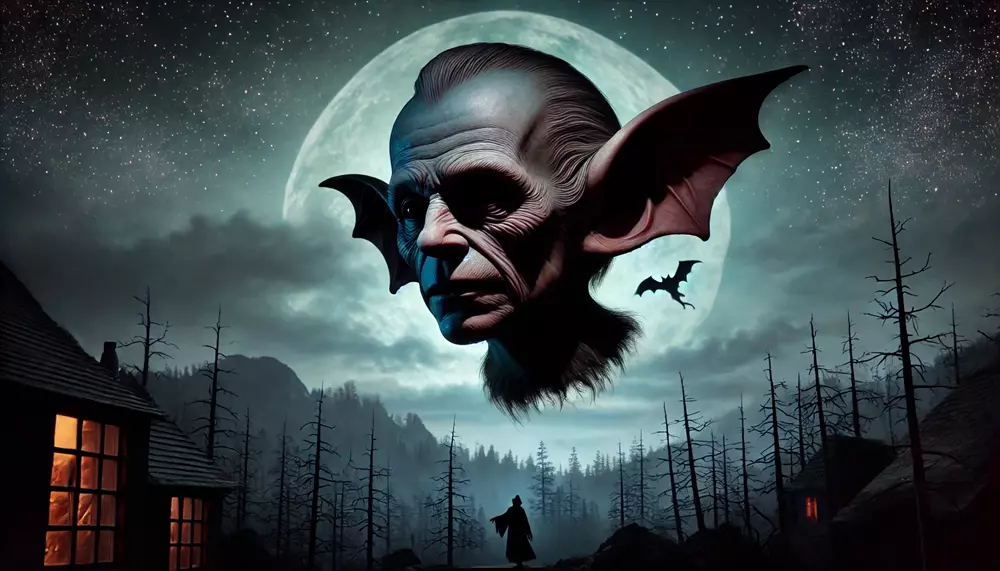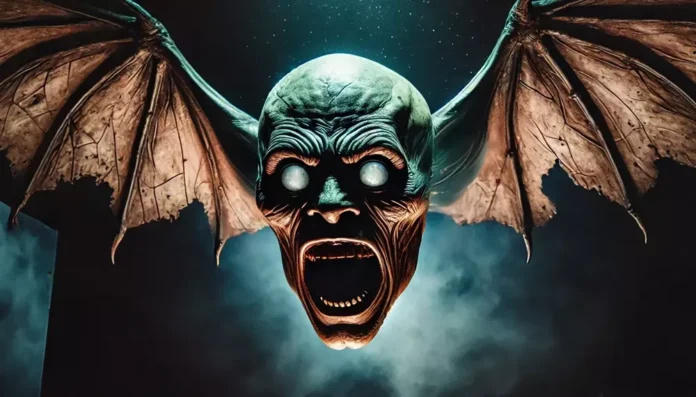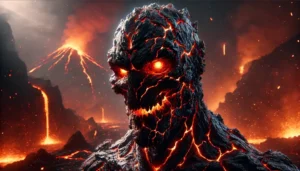Introduction
The Chonchon is one of the most eerie and unsettling creatures in Chilean and Argentinian folklore. Known for its terrifying appearance—a disembodied head with wings made from its own ears—it has long been the subject of myths and fears in South American culture. The Chonchon isn’t just a horrifying visual; it symbolizes something deeper: the embodiment of powerful dark magic and the mystique surrounding witches. This beast has roots in ancient beliefs that blend native Mapuche and Spanish colonial influences, making it a significant figure in South American folklore. Its stories persist to this day, inspiring dread and fascination alike.
History/Origin
The origins of the Chonchon are deeply entwined with the practices of Mapuche shamanism. According to ancient beliefs, the Mapuche people practiced a form of mysticism that involved spiritual transformation, giving rise to myths about powerful figures who could defy physical limits. When Spanish colonizers encountered this belief, it merged with European witchcraft legends. The concept of the Chonchon grew from the combination of indigenous spirituality and European fears about dark magic, creating a hybrid legend that has endured for centuries.
Name Meaning
The name “Chonchon” is said to mimic the sound the creature makes as it flies. The sound—“chon chon”—is described as a disturbing flapping noise that echoes across the night sky. This auditory signature is a warning to those who hear it, alerting them to the Chonchon’s presence. The name reflects the belief that even if unseen, the Chonchon’s approach can be detected through its ominous noise.
Appearance
The Chonchon’s appearance is both unique and terrifying. Imagine a severed human head flying through the sky, with oversized, bat-like ears that act as wings. Its face is said to be contorted with expressions of malice, its eyes glowing with supernatural energy. Some descriptions even mention a faint, unnatural light surrounding the head as it flies. In other accounts, the Chonchon drips blood from its mouth or eyes, adding to its gruesome image. These details serve to cement the creature’s reputation as a harbinger of death and an entity of dark magic.
Background Story
Legend says that the Chonchon is the result of a sorcerer or a witch who transforms their head and uses it to fly across the night sky. This transformation allows the practitioner to spy on people or enact curses. It’s believed that these witches and sorcerers detach their heads using forbidden spells, allowing them to leave their physical bodies behind and roam freely in the form of the Chonchon. This ability grants them access to places they would otherwise be barred from, making the Chonchon both a symbol of freedom and of forbidden power.

“The Chonchon is known to prowl in the dead of night, a warning against meddling in dark arts.” (Mapuche Folk Tales)
Cultural Impact
In rural South American villages, especially in Chile and Argentina, the Chonchon continues to be a part of oral tradition. People tell tales of the Chonchon as a warning against associating with dark magic. The creature also represents the fear of hidden threats and unknown dangers lurking in the night. Parents might use stories of the Chonchon to caution children to behave or avoid wandering alone after dark. Its terrifying visage is often drawn or depicted during cultural festivals, capturing both the fascination and dread it inspires.
Similar Beasts
The Chonchon has similarities with other mythical flying heads, such as the “Penanggalan” from Southeast Asia, a vampire-like creature that detaches its head to hunt. Another similar creature is the “Manananggal” of the Philippines, a vampiric monster that detaches its torso to fly. Although culturally distinct, these creatures all represent fears of the unknown and the taboo. The Chonchon, however, has a unique place in South American folklore, symbolizing the fear of sorcery and the consequences of forbidden knowledge.
Religion/Ritual
There is a religious dimension to the Chonchon legend within the Mapuche community. The presence of the Chonchon is associated with sorcery and forbidden magic, which clashes with Catholic beliefs introduced by Spanish colonists. Historically, villagers would conduct rituals to ward off the Chonchon, believing that holy water, prayers, or certain herbs could protect them from its influence. Mapuche shamans, or “machi,” might perform spiritual cleansing ceremonies to remove the threat of a Chonchon in the area.
“The power of faith alone can shield us from the malice of the Chonchon,” as one colonial priest advised his congregation. (Early Colonial Accounts)
Scientific or Rational Explanations
One possible explanation for the Chonchon legend could stem from nocturnal animals or birds whose shapes and sounds may have inspired these stories. Owls, for instance, have wide wingspans and can emit unsettling sounds. These birds of prey could be misidentified as supernatural beings when seen under certain conditions, particularly by firelight or moonlight. Additionally, the sound of wind rustling through trees or structures could resemble the Chonchon’s “chon chon” flapping noise, especially in isolated rural settings.
Modern Cultural References
The Chonchon appears in several contemporary cultural contexts, illustrating its continued relevance in modern-day folklore.
Literature: The Book of Imaginary Beings by Jorge Luis Borges: This compilation includes an entry on the Chonchón, describing it as a bird with a human head that detaches from its body at night to fly around and cause mischief.
Film: Chonchón (2013): A Chilean horror film that portrays the creature as a demonic bird terrorizing a small town, bringing the folklore to the big screen.
Television: Grimm (Season 2, Episode 9): The TV series features a creature inspired by the Chonchón, depicted as a Wesen (a supernatural creature) that can detach its head and fly.
Video Games: Castlevania: Symphony of the Night: The Chonchón appears as a common enemy, portrayed as a bird-like creature with a human head, aligning with its traditional folklore depiction.
“Even in today’s world, the Chonchon’s legend endures, a spectral reminder of the night’s dangers.” (Chilean Folklore Journal)
Conclusion
The Chonchon remains a potent symbol of fear and intrigue in South American folklore. Its portrayal as a flying head highlights the mystique surrounding witchcraft, forbidden knowledge, and the unknown. For centuries, the Chonchon has warned people to respect the powers they may not fully understand, reinforcing cultural values and fears about the supernatural. As modern media continues to explore and reimagine ancient myths, the Chonchon stands as a testament to humanity’s enduring fascination with the eerie and the unexplained.
“The legend of the Chonchon has grown wings, spanning centuries and spreading fear.” (South American Myth Chronicles)








